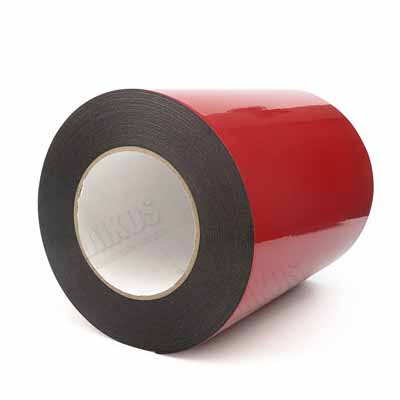Thermal Conductive Tape is the latest addition to the growing list of thermal and electrical tapes, which have revolutionized the use of adhesive tape in industries. Thermoplastic sheets are widely used for bonding or screwing together. The basic principle of thermal conducting is that heat conduction is affected by both applied thermal and mechanical pressure. This paper is different from other thermal and mechanical tapes because it incorporates a chemical structure known as Thermoplastic Inert Gas (TIG), which changes the thermal conductivity and mechanical compression. Thermoplastic tape is extensively used in packaging applications, thermal insulating tapes, and thermal barrier tapes.
Thermal conductive tape is made from a high-performance glass fiber cloth that contained a high-performance thermoplastic adhesive polymeric membrane with high thermal conductivity, which is adhered to both heat-moving surfaces and power supplies without any separation. It is specifically designed to give a preferential thermal transfer path between power supplies and heat-generating elements. The TIG-Ampole design allows heat conduction from the power supply to the attached heat-moving element, whilst preventing heat movement from the power supply to the thermoplastic substrate. Simple configurations of TIG are used in a variety of applications such as motor controls, LED lights, precision component adhesives, and seals. Thermoplastic Lipo material is the major component used in the manufacturing process of thermal conductive tapes.
The thermoplastic lipo material was originally developed to be an adhesive for heat-sensitive components ends, such as trim, screws, bolts, and nuts. The innovative polymers were then found to be ideal for use as an electrical insulator, which resulted in the development of 3m thermally conductive tapes. These are excellent conductors of heat under normal operating conditions and are capable of withstanding temperatures up to 500 degrees Celsius. These tapes have several important advantages over other methods, which are used in the past, and are the key reason why they are gaining popularity with a large number of industries across the world.
The most common application of thermal conductive tape is in automotive electronics. In automotive electronics, the application of thermal conductive tape helps to improve the quality and reliability of various components. It can reduce heat dissipation of electrical components, which makes them more robust and dependable. Moreover, it is possible to employ different colors of thermal conductive tapes, which helps to customize the overall look and feel of the device or component. For example, one may opt for a blue thermal conductive tape adhesion to minimize heat buildup in an aluminum auto body, or a red tint to make an instrument glow.
The ability of a thermal adhesive tape to form and bond together along different axes makes it more useful in assembling various objects. This feature is particularly important when the objects to be assembled are made from highly conductive materials, which require considerable thickness. When thermal conductivity tape is used in these cases, the bonding is not a surface-by-surface affair but involves chemical adhesion instead. This makes the bonding process rather uniform, consistent, and reliable and enables the parts to be put together in the right position. Therefore, thermal conductivity tape can be very useful in applications where mechanical attachments are required, such as in assembly-line production.
Apart from its mechanical applications, thermally conductive tape has also found application in other sectors. One popular application of this material is in electrical thermal management, where it is used as a heat sink to prevent electronic components from overheating. A thick enough layer can even prevent heat conduction between two or more devices, thus greatly improving power consumption. Another application of heat sink tapes is in LED lighting thermal management, where they are applied between two LED lights in order to prevent the lights from emitting too much heat and reduce the energy needed to power them. The applications in the electrical and automotive industries have made this particular material very popular.




